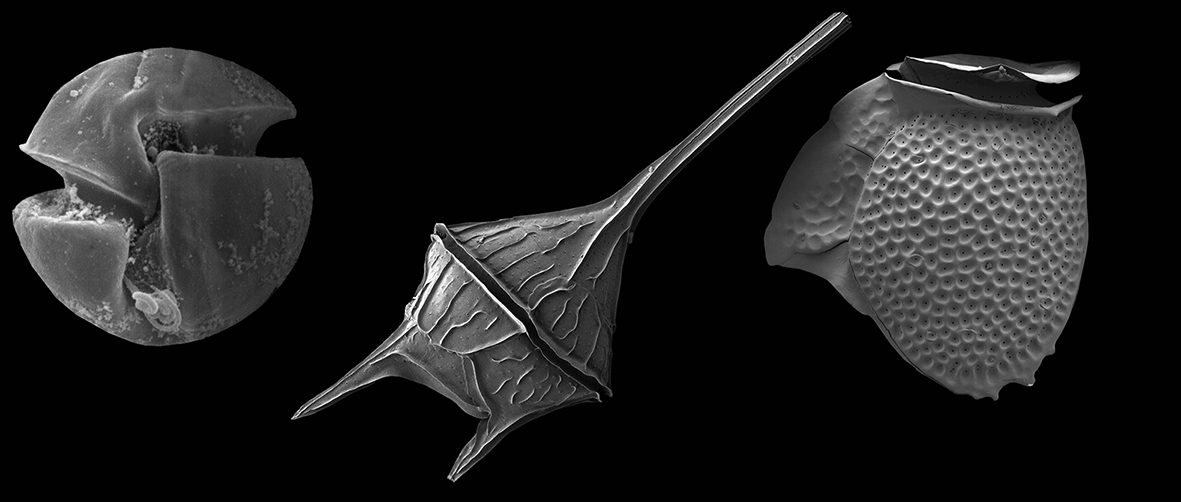Dinoflagellates (Class Dinophyceae) are microscopic and predominantly unicellular organisms, although colonial aggregations sometimes occur. They possess two dissimilar flagella that are located and oriented in a manner that facilitates the distinctive whirling motion of the cells. They show a large variation in shape and size, and possible nutritional modes include autotrophy, heterotrophy and mixotrophy. Dinoflagellates are important in the Southern Ocean food webs both as a food source for higher trophic levels and, for the heterotrophic and mixotrophic species, as consumers of smaller marine microbes.
There are 82 species in our key and many can be identified solely by light microscopy (LM) but others may require the use of a scanning electron microscope (SEM) to resolve cryptic features. Primarily we have used common or obvious characteristics such as ‘size’ and ‘shape’ of cells to separate species. Morphological details observed at LM or SEM level (e.g. cingulum details, valve ornamentation, plate morphology) are then used to further narrow your results. A thumbnail image of each species is included as a “first impression” and in some cases this can lead directly to a successful identification. Further images can be viewed on the factsheets.
Related Links
Taxonomic names are those used in ‘AlgaeBase’ (accessed April 2013). The following references and weblinks may be useful to the user:
References
- Dodge, J.D. (1982), Marine Dinoflagellates of the British Isles. (Her Majesty’s Stationary Office, London). 303 pp.
- Steidinger, K.A. & Tangen, K. (1997), Dinoflagellates. In Tomas, C.R. (ed.), Identifying Marine Diatoms and Dinoflagellates. (Academic Press, San Diego). pp. 387–589.
- Bjørnsen, P. & Kuparinen, J. (1991), Growth and herbivory by heterotrophic dinoflagellates in the Southern Ocean studied by microcosm experiments, Mar. Biol. 109: 397–405.
- McKenzie, C.H. & Cox, E.R. (1991), Spatial and seasonal changes in the species composition of armored dinoflagellates in the Southwestern Atlantic Ocean, Polar Biol. 11: 139–144.
